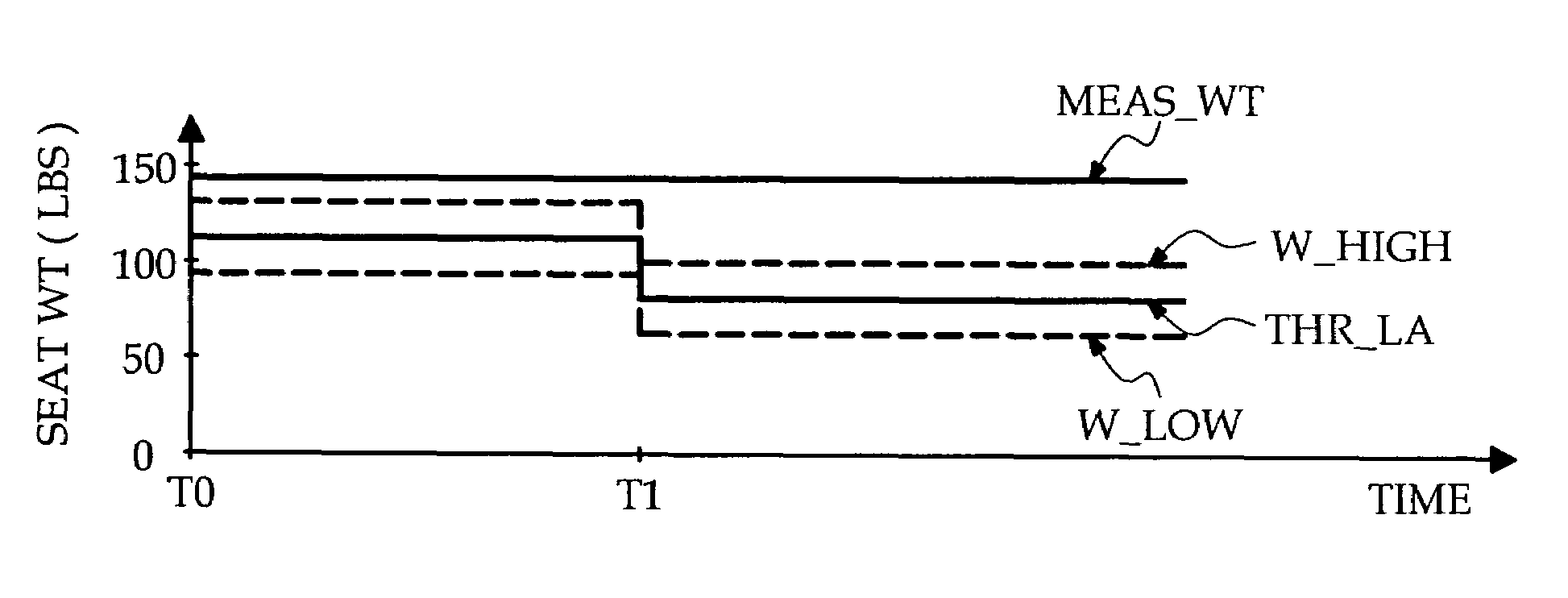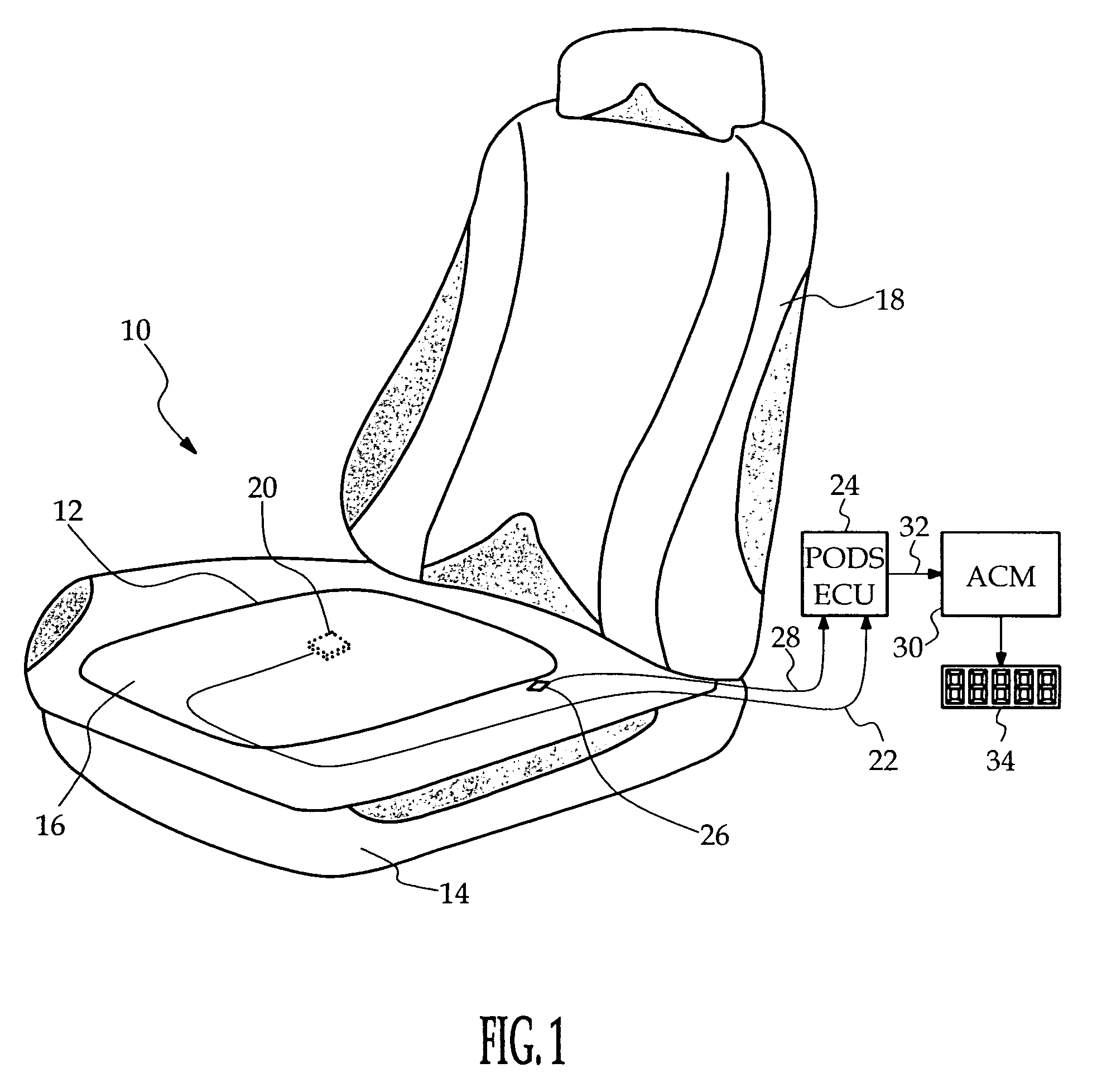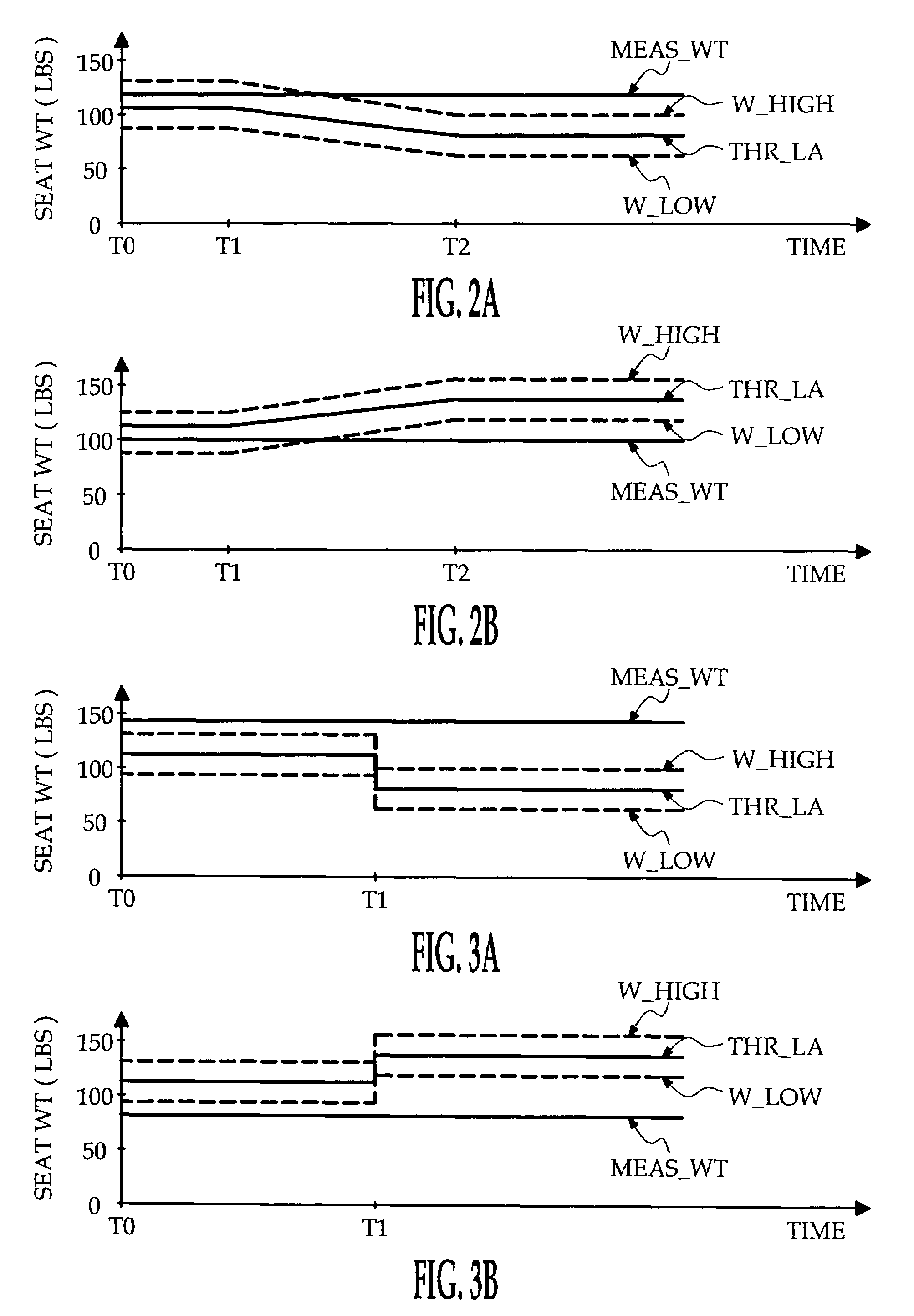Method of characterizing an adult occupant of a vehicle seat based on a measure of seated weight
a vehicle seat and adult occupant technology, applied in the direction of pedestrian/occupant safety arrangement, instruments, tractors, etc., can solve the problems of minor repositioning of the occupant, failure to prevent undesired oscillation of the occupant characterization, etc., to improve the weight-based occupant characterization, reliably distinguishes between large and small adult occupants, and effectively increases the separation between the detected weight and the threshold
- Summary
- Abstract
- Description
- Claims
- Application Information
AI Technical Summary
Benefits of technology
Problems solved by technology
Method used
Image
Examples
Embodiment Construction
[0008]The present invention is disclosed in the context of a restraint system for an occupant of a vehicle passenger seat 10, where the occupant weight is detected based on the fluid pressure in a seat cushion bladder 12. In general, however, the present invention applies to other types of weight-based occupant detection systems as well, such as systems that sense the strain in a seat frame element, or systems that include a network of pressure sensitive cells distributed over the seating area.
[0009]Referring to FIG. 1, the vehicle seat 10 is supported on a frame 14, and includes foam cushions 16 and 18 on the seat bottom and back. The bladder 12 is disposed in or under the foam cushion 16 substantially parallel with the central seating surface, and preferably contains a fluid such as silicone which is non-corrosive, and not subject to freezing at extreme ambient temperatures. In addition, semi-rigid interface panels may be placed above and / or beneath the bladder 12 to protect the b...
PUM
 Login to View More
Login to View More Abstract
Description
Claims
Application Information
 Login to View More
Login to View More - R&D
- Intellectual Property
- Life Sciences
- Materials
- Tech Scout
- Unparalleled Data Quality
- Higher Quality Content
- 60% Fewer Hallucinations
Browse by: Latest US Patents, China's latest patents, Technical Efficacy Thesaurus, Application Domain, Technology Topic, Popular Technical Reports.
© 2025 PatSnap. All rights reserved.Legal|Privacy policy|Modern Slavery Act Transparency Statement|Sitemap|About US| Contact US: help@patsnap.com



